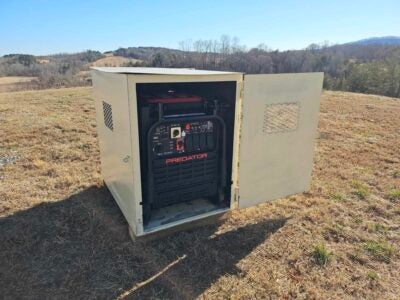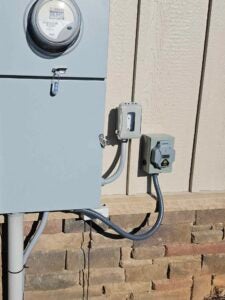A practical approach to power security
Published 11:58 am Tuesday, January 28, 2025
|
Getting your Trinity Audio player ready...
|
Without revealing my exact age, I must admit that it wasn’t until my late sixties that I seriously considered the need for a whole-house generator. But with increasingly severe weather events and multiple long-term power outages in recent years, my beloved partner and I finally decided to invest in one to put our anxieties to rest—especially my partner, who would never take a chance with her horses’ well-being. To our surprise, we discovered that lower-cost generator options are available and worth considering.
Depending on where you live, losing power can be more than just an inconvenience. For those who rely on a well and pump for water, especially in equestrian settings where access to water is crucial, an extended outage can be extremely challenging. Additionally, the loss of phone and internet service can make it feel as if you’ve lost contact with the outside world.
As a real estate broker, I’ve frequently encountered properties equipped with large-scale standby generators. While impressive, their price points often seemed exorbitant, making them appear like an inflated investment out of reach for most people. Fortunately, there are far more affordable options available today.
Trending
When most people think of whole-house generators, only a few major brands come to mind, such as Generac, Kohler, and Cummins. These units typically require professional installation, high upfront costs, and regular maintenance. They also demand periodic cycle testing, and their noise levels can be more than distracting.
Choosing natural gas, propane, gasoline, and dual-fuel generators can be confusing. While natural gas standby generators provide seamless automatic operation, they require professional installation and access to a gas line, which can significantly increase expenses and add complexity. Portable gasoline generators offer flexibility at a lower price point but require manual setup and fuel storage considerations.
As of 2025, there are over 150 different generator models on the market, ranging from small portable units to large standby systems. The price spectrum varies widely, with whole-house standby generators typically costing between $6,000 and $11,000, excluding installation, depending on size and brand.
Fortunately, lower-cost portable and inverter generators in the 5,500- to 9,500-watt range can adequately serve many households’ essential power needs. These models, produced by brands such as Predator, Westinghouse, Honda, and DuroMax, generally cost between $600 and $2,500, a significant savings compared to permanently installed standby units.

This fabricated metal enclosure effectively houses a lower-cost generator, providing shelter while ensuring proper ventilation. (Photo by Kirk Gollwitzer)
So, what is an inverter generator? Unlike conventional generators, inverter generators produce cleaner and more stable power. Traditional generators run at a constant speed regardless of demand, while inverter generators adjust their engine speed based on the load, making them more fuel-efficient and quieter. This makes them ideal for powering sensitive electronics, such as computers and medical devices, without the risk of power surges.
For those considering portable solutions, placement is key. These small units should be positioned at least 20 feet from the home in a ventilated enclosure to protect them from the elements while allowing proper exhaust airflow. A sturdy connection cord should be stored with the unit for easy access.
Trending
When the power goes out, the generator should be properly connected before switching the necessary transfer switches to avoid electrical shocks. Once running, ensure the generator’s exhaust is clear and properly ventilated.
It may seem obvious, but it’s often overlooked—keep plenty of fuel on hand, stored safely away from living areas. Only run essential appliances and devices to extend fuel life. Periodically check if power has been restored by turning off the generator before switching back to the main power grid. Run the generator regularly to ensure it is in good working order and use fuel stabilizers to prevent degradation if storing gasoline for long periods.
Lower-cost generator solutions are readily available and can often be installed with the help of a professional electrician. However, whether using a standby or portable unit, safety, preparation, and regular maintenance are essential. By following best practices, you can ensure your generator is ready when you need it most, providing peace of mind and power reliability at a fraction of the cost of large-scale systems. And your horses will be happy too!

With the right extension plug and proper wiring to your home’s power box, a whole-home backup generator can provide efficient and reliable power. (Photo by Kirk Gollwitzer)






